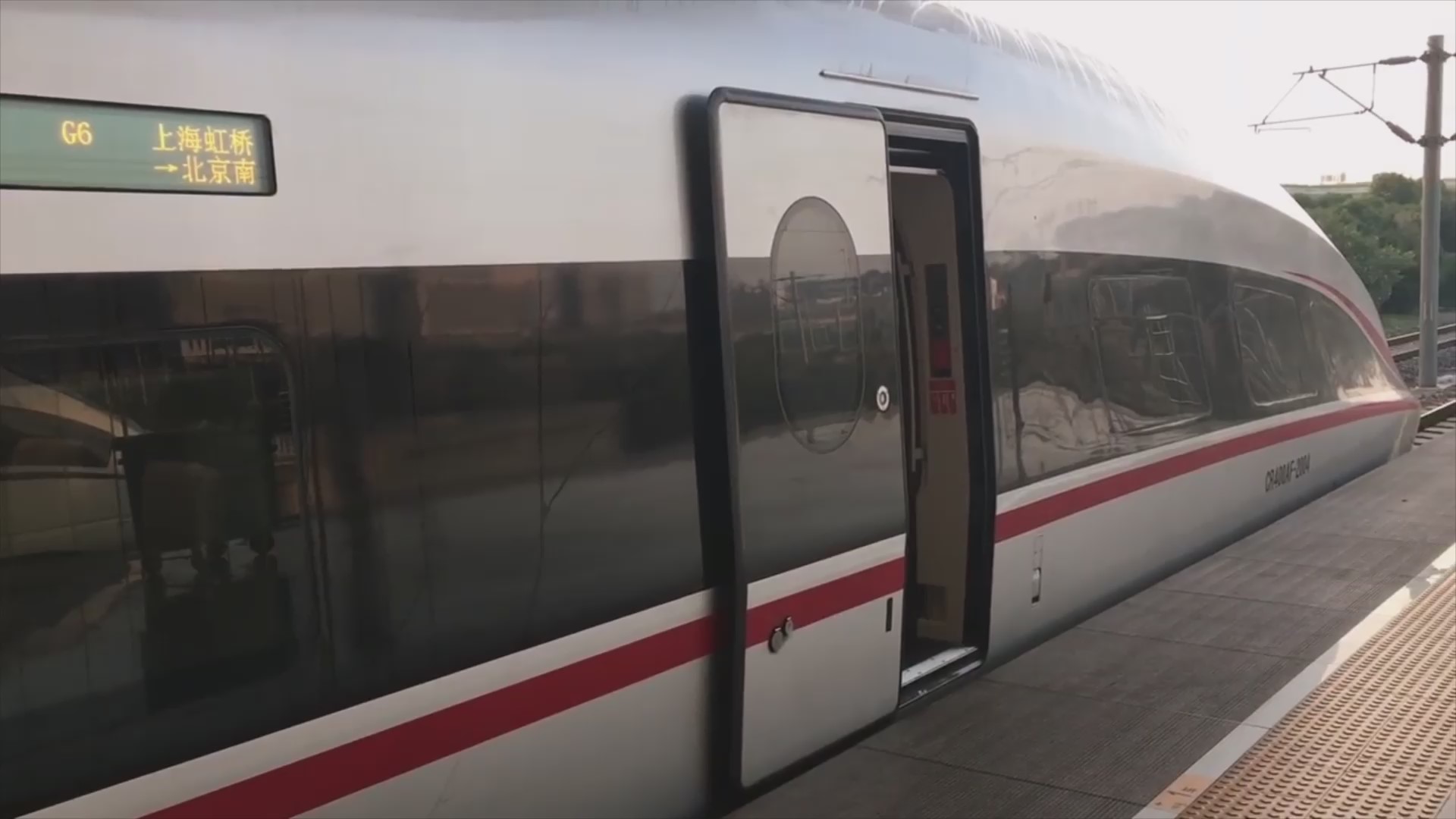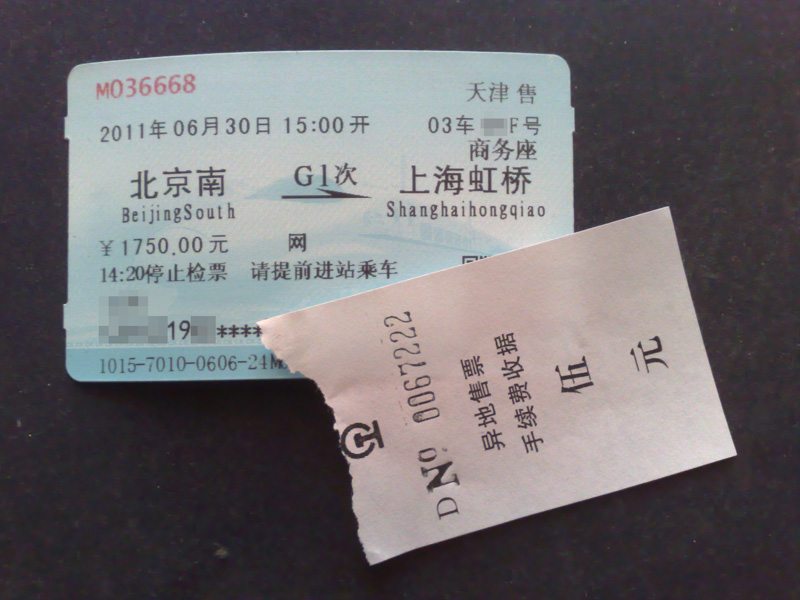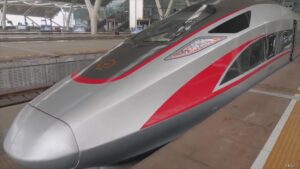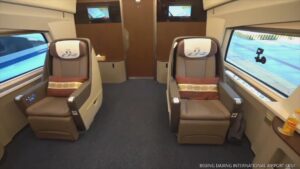

The Beijing–Shanghai high-speed railway (or Jinghu high-speed railway, from its name in Mandarin) is a high-speed railway 1318 kilometres (819 mi) long that connects two major economic zones in the People’s Republic of China: the Bohai Economic Rim and the Yangtze River Delta. Construction began on April 18, 2008 with the line opened to the public for commercial service on June 30, 2011. It is the world’s longest high-speed line ever constructed in a single phase. The line is one of the busiest high speed railways in the world, transporting over 180 million passengers in 2017 more than the annual ridership of the entire TGV or Intercity-Express network. It is also China’s most profitable high speed rail line
NANJING STATION
SHGANGHAI HONGQIAO RAILWAY DEPOT
BEIJING SOUTH STATION

Specifications
- The Beijing–Shanghai High-Speed Railway Co., Ltd. was in charge of construction
- The project was expected to cost 220 billion yuan (about $32 billion)
- An estimated 220000 passengers are expected to use the trains each day which is double the current capacity
- During peak hours, trains should run every five minutes
- 1140 km or 87% of the railway is elevated
- There are 244 bridges along the line
- The 164-km long Danyang–Kunshan Grand Bridge is the longest bridge in the world
- The 114-km long viaduct bridge between Langfang and Qingxian is the second longest in the world and
- The Cangde Grand Bridge between Beijing’s 4th Ring Road and Langfang is the fifth longest
- The line also includes 22 tunnels, totaling 16.1 km (10.0 mi)
- A total of 1268 km (788 mi)of the length is ballastless
- The CTCS-3 based train control system is used on the line, to allow for a maximum speed of 380 km/h of running and a minimum train interval of 3 minutes
- With power consumption of 20 MW and capacity of about 1,050 passengers, the energy consumption per passenger from Beijing to Shanghai should be less than 80kWh
| Technical | |
|---|---|
| Line length | 1318 km (819 mi) 1302 km (809 mi) (main line) |
| Track gauge | 1435 mm (4 ft 8 1⁄2 in) standard gauge |
| Minimum radius | mostly 7,000 meters or 400 meters near Beijing South |
| Operating speed | 350 km/h (217 mph) |
| Maximum incline | 2 % |
| Termini | Beijing South Tianjin West Shanghai Hongqiao |
|---|---|
| Stations | 24 |
| Ridership | 180 million per year (2017) |
| Operation | |
| Opened | June 30, 2011 |
Engineering challenges
- Testing began shortly thereafter on the main line section between Shanghai and Nanjing
- This section of the line sits on the soft soil of the Yangtze Delta, providing engineers an example of the more difficult challenges they would face in later construction
- In addition to these challenges, high speed trains use extensive amounts of aluminium alloy, with specially designed windscreen glass capable of withstanding avian impacts
Construction & Operations
- Construction work began on April 18, 2008
- Track-laying was started on July 19, 2010, and completed on November 15, 2010
- On December 3, 2010, a 16-car CRH380AL trainset set a speed record of 486.1 km/h (302.0 mph) on the Zaozhuang West to Bengbu section of the line during a test run
- On January 10, 2011, another 16-car modified CRH380BL train set a speed record of 487.3 km/h (302.8 mph) during a test run
- The overhead catenary work was completed on February 4, 2011 for the entire line
- According to CCTV, more than 130000 construction workers and engineers were at work at the peak of the construction phase
- According to the Ministry of Railways, construction has used twice as much concrete as the Three Gorges dam, and 120 times the amount of steel in the Beijing National Stadium
- There are 244 bridges and 22 tunnels built to standardized designs
- The route is monitored by 321 seismic, 167 windspeed and 50 rainfall sensors
- Tickets were put on sale at 09:00 on June 24, 2011, and sold out within an hour
- To compete with the new train service, airlines slashed the cost of flights between Beijing and Shanghai by up to 65%
- Economy air fares between Beijing and Shanghai fell by 52%
- In 2019, Jinghu Express Railway Company submitted an application for an IPO
- The company announced that the Jinghu HSR recorded a net profit of ¥9.5 billion (US$1.35 billion) in the first nine months of 2019
- In 2020, BSHSRC went public, as the first high-speed rail operator in China
- First and Second Class coaches are available on all trains
- On the shorter trains, a six-person Premier Class compartment is available
- Available on the longer trains are up to 28 Business Class seats and a full-length dining car
- This line is gradually gaining popularity through the years and it is reaching its capacity at weekends and holidays
- With the introduction of the China Standardized EMU, the highest operation speed of the line is raised to 350 km/h on September 21, 2017
- The fastest train will complete the journey in 4 hours 18 minutes (G7), while making two stops along the trip at Jinan and Nanjing
| Speed | 2nd-class seat | 1st-class seat | VIP Seat (Sightseeing Seat) | Quickest Journey Time | Daily services |
|---|---|---|---|---|---|
| G(350 km/h) | 555 | 935 | 1748 | 4h24m | 94 |
- With tickets priced at ¥1750 one way in the sightseeing compartment at the ends of the trains, passengers can sit behind the driver
- Tickets at the same price all feature seats which recline in full
- Holders of these tickets are additionally given free lounge access at major stations, are served a free meal onboard close to meal times, and are given unlimited refills of non-alcoholic drinks while on board
- The online ticket service opened when brick and mortar ticket service started
- Passengers can buy tickets on the internet and pay the fare by debit or credit card
- If the passenger uses a 2nd-generation PRC ID Card and does not want any documents printed, they can use their ID card directly as the ticket to pass the AFC, otherwise the passenger must change to a paper ticket prior to travel
- Since late 2011, it has also been possible for users of these ID cards to print a ticket with the remark “Ticket Checked” after the end of the trip for reimbursement purposes

